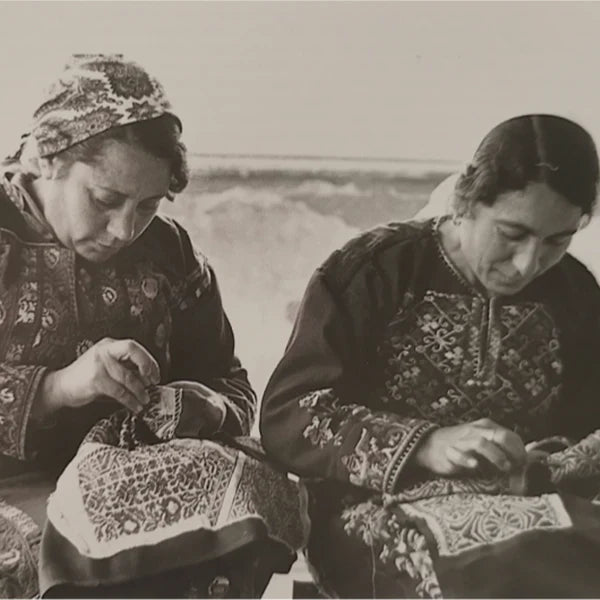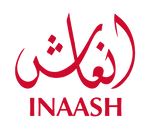History of Palestinian Embroidery
Embroidery and textiles convey stories of cultures not only from a historical perspective but more importantly of current and continuing sense of identity into the future. It’s a powerful transnational timeless visual language.
Palestinian embroidery in particular plays a pivotal role in the narrative of Palestinian history, and the women embroiderers who stitch this history.
This traditional heritage re-asserted the Palestinian national identity after the tragic uprooting and dispersion of the nakba.
Long before 1948, embroidery reflected the social and economic landscape of nineteenth and twentieth century Palestine. Textiles were part of trade networks at that time more than embroidery itself. Weaving centers were spread across Palestine and embroidery was rather a side activity not necessary connected to wage earning. Young girls learned embroidery early on to build their trousseaux and take it into married life.
Nineteenth and twentieth century embroidery was characterized by its geographical specificity, whereby each village had its own patterns, motifs and shades of reds (dark red in Ramallah, brown red in Jericho area and fuchsia red in Gaza) . There was a definite split between rural and urban thoubs. The intensity of embroidery and fabric used reflected social status and personal life of the wearer.
The embroidered symbols were very connected to the land, flora and fauna, and food of that area.

These authentic motifs or symbols were passed on across generations with minor changes as they were very much related to women's daily traditional lives in their villages.
After the Nakba and the tragic loss of agricultural land, embroidery became a wage earning for women refugees. Hence it was commodified and marketed as artisanal luxury product.
The relevance of specific geographical motifs changed. Palestinian women in refugee camps meddled and embroidered together, so they were exposed to patterns and symbols from other parts of Palestine.
Embroidery was transformed into mirroring a Palestinian mix of symbols. Hence embroidery became homogenized to a certain extent.
Even fabrics changed from cottons, linens, silks which were mostly imported from Syria into cheaper fabrics. Threads became chemically dyed instead of hand-colored silks. All this to reflect the dramatic change in the livelihood of these women.
Embroidery became a sacred cultural heritage, related to the idealized past, and a mission to preserve the authenticity. It became part of the nation building of Palestine outside its borders. Many institutional and private collections of old thoubs play a vital role in preserving that authenticity.

After 1948 many NGOs and small businesses were founded in Palestine ,Jordan and Lebanon , aiming to provide a source of income to women refugees while preserving the heritage of embroidery and the story behind each stitch. The commercialization of embroidered clothes and household items targeted middle class and above. Sadly, embroiderers could no longer afford their own work, they sort of became invisible.
Among this NGO s is Inaash Association founded in 1969 by Huguette Caland.
The trajectory of Inaash has been amazingly successful, dynamic, creative, and supportive of women embroiderers in the camps. Inaash is dedicated to the revival and preservation of Palestinian embroidery with a vision to modernize designs to conform to market demands. Embroidery was adopted by many fashion designers to embellish their contemporary collections.
